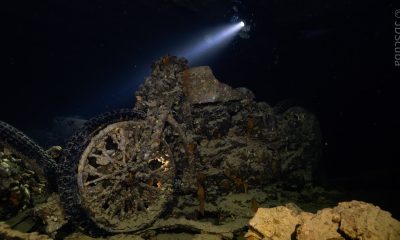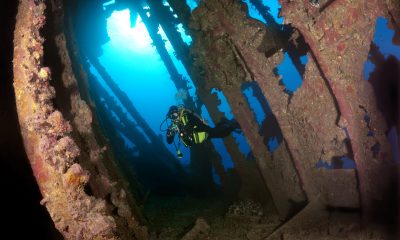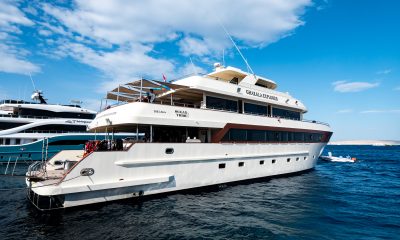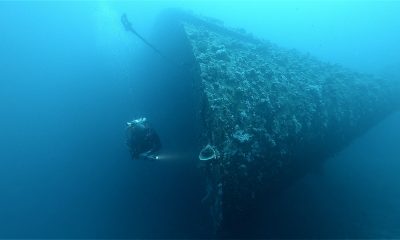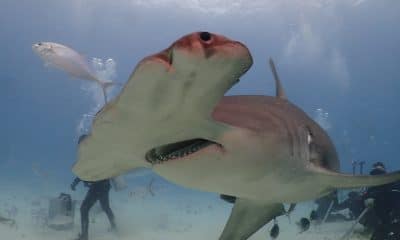News
Mexican Navy ship to become Baja’s first artificial reef
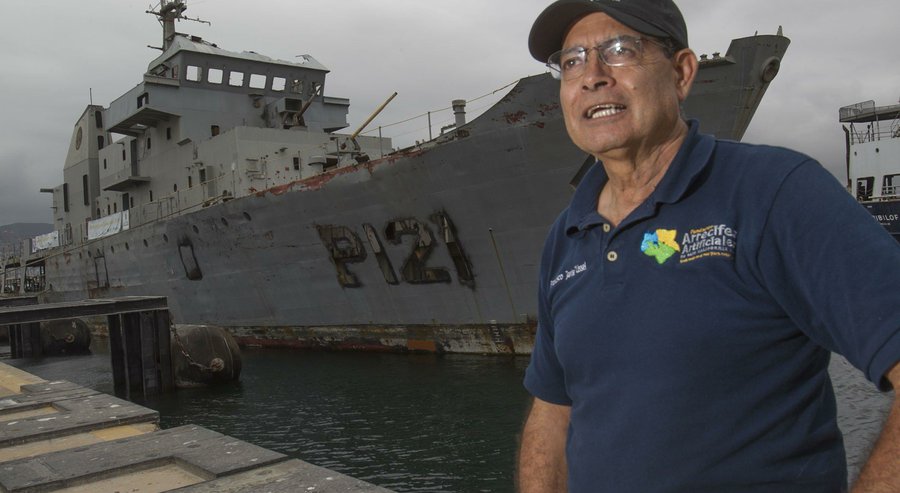
Divers plan to sink former Mexican naval vessel off the coast of Rosarito Beach
For three decades, the Uribe served as a patrol boat for the Mexican navy. Now, the 220-foot vessel has a new destiny, 90 feet under the sea, as Baja California’s first artificial reef.
After six years of knocking on doors, filling out permits, commissioning studies and raising funds, Francisco Ussel and fellow members of Baja California’s diving community are preparing a major step forward: sinking the ship off the coast of Rosarito Beach on the 21st November.
Scientists estimate it will take at least two years for a full-blown underwater habitat to develop on and around the vessel, with kelp, strawberry anemones, octopus, lobsters, and schools of fish.
“The sinking of the ship will be the beginning of a dream,” said Ussel, a 60-year-old architect and Tijuana restaurateur, who is president of Baja California Divers.
The long-term vision is the creation of an underwater park that would be the centerpiece of a new tourism sector for Baja California, bringing in visitors during off-peak months, fall through spring, when the conditions are best for diving. The natural market would be Southern California divers.
In planning the Uribe’s sinking, the Baja California diving community found a strong ally in San Diego’s scuba diving community: Dick Long, former president of the California Oceans Foundation, and founder of Diving Unlimited International. An early adviser to Baja California Divers, he continues to champion their efforts.
“People are going to see Mexico as a place other than to drink margaritas,” said Long, whose group was behind the sinking of the Canadian destroyer HMCS Yukon off Mission Beach in July 2000. “It’s going to bring tourism to Mexico.”
According to California Ships to Reefs, an organisation that promotes the creation of artificial reefs, the Yukon brings an estimated $4.5 million a year to the San Diego economy, as visiting divers book local hotel rooms, dine at restaurants, and rent boats and diving gear.
The Uribe was named for Virgilio Uribe, an 18-year-old Mexican sailor who died in 1914 while defending Veracruz against U.S. occupation. Built in Spain, the vessel suffered irreversible damage to its bridge and other areas during a fire in November 2011. Ussel, who also heads the Artificial Reef Foundation of Baja California, was able to secure the donation of the ship to Rosarito Beach, which is lending it at no cost to the foundation.
So far, the foundation has spent more than $600,000 toward the sinking of the Uribe. Just moving it from the mainland port of Manzanillo cost approximately $100,000. A good portion of the funds have paid for scientific studies of the area to determine the most suitable location for the ship’s sinking.
The Uribe’s steel hull will rest about two miles offshore in an area of fine sand and mud, in Bahia El Descanso off the community of Puerto Nuevo, said Luis Alvarez, an oceanographer with the Ensenada Center for Scientific Research and Higher Education, or CICESE. To determine its suitability, scientists studied a wide range of other factors, including depth, incline, turbidity, the strength of currents, and the direction of waves.
The project has also awakened the interest of CICESE researcher Victoria Diaz. A specialist in benthic zones, a term describing the lowest levels of bodies of water, Diaz plans to follow the development of the reef around the Uribe.
“It’s an interesting project, because it will attract tourism, and give us a chance to study how the reef is colonized,” Diaz said.
Support from all levels of government – federal, state and local – has been critical to the project’s progress, Ussel said.
Baja California Gov. Francisco Vega de Lamadrid, a certified open-water diver, was quick to back the ship’s sinking, and the state’s tourism, economic development and fishing secretaries all have lent support.
The city of Rosarito Beach, whose economy is heavily dependent on tourism, has been the strongest champion, Ussel said, as successive mayoral administrations have embraced the project. Under current Mayor Silvano Abarca, the city has contributed more than $300,000, said Juan Tintos, a former Baja California tourism secretary who is now an adviser to the city.
“It’s been a learning experience,” said Tintos. “We’ve never sunk a ship in Baja California before. We’ve never promoted scuba diving before.”
The vessel’s sinking would be only the first step. Ussel and his fellow divers are planning a 100-acre underwater park, with a ship graveyard in the deepest section that would feature the Uribe and three other vessels. A shallower section would be covered with pyramids, busts and statues to evoke a pre-Hispanic Atlantis. Another would pay homage to the Titanic, with chimneys, propellers and other pieces of wreckage. A museum on shore would allow non-divers to learn about the project.
Ussel said his love for the ocean dates to his Mexico City boyhood, when he read Jules Verne’s “20,000 Leagues Under the Sea.” He has lived in Baja California for 33 years, but it wasn’t until 18 years ago that he made his first dive and got hooked.
He recently celebrated his 60th birthday by scuba diving in Acapulco and traveled with his wife to dive in Florida’s Key West to celebrate their 40th anniversary.
“It’s a passion to see this growth, to see these fish, to see the colours, to see God’s hand here,” he said.
Ussel said the project has already sparked interest in promoting scuba diving. Hotels are offering packages that include trips to dive in the Coronado Islands. Rosarito Beach has seen the opening of its first dive shop, and a hotel owner is planning to build a marina to serve tourists who come to dive.
Source: www.sandiegouniontribune.com
Photo: John Gibbins
News
Dive Worldwide Announces Bite-Back as its Charity of the Year

Over the next 12 months, specialist scuba holiday company Dive Worldwide will be supporting Bite-Back Shark & Marine Conservation with donations collected from client bookings to any one of its stunning dive destinations around the world. The independently-owned operator expects to raise £3000 for the UK charity.
Manager at Dive Worldwide, Phil North, said: “We’re especially excited to work with Bite-Back and support its intelligent, creative and results-driven campaigns to end the UK trade in shark products and prompt a change in attitudes to the ocean’s most maligned inhabitant.”
Bite-Back is running campaigns to hold the media to account on the way it reports shark news along with a brand new nationwide education programme. Last year the charity was credited for spearheading a UK ban on the import and export of shark fins.
Campaign director at Bite-Back, Graham Buckingham, said: “We’re enormously grateful to Dive Worldwide for choosing to support Bite-Back. The company’s commitment to conservation helps set it apart from other tour operators and we’re certain its clients admire and respect that policy. For us, the affiliation is huge and helps us look to the future with confidence we can deliver against key conservation programmes.”
To launch the fundraising initiative, Phil North presented Graham Buckingham with a cheque for £1,000.
Visit Dive Worldwide to discover its diverse range of international scuba adventures and visit Bite-Back to learn more about the charity’s campaigns.
MORE INFORMATION
Call Graham Buckingham on 07810 454 266 or email graham@bite-back.com
Gear News
Scubapro Free Octopus Promotion 2024
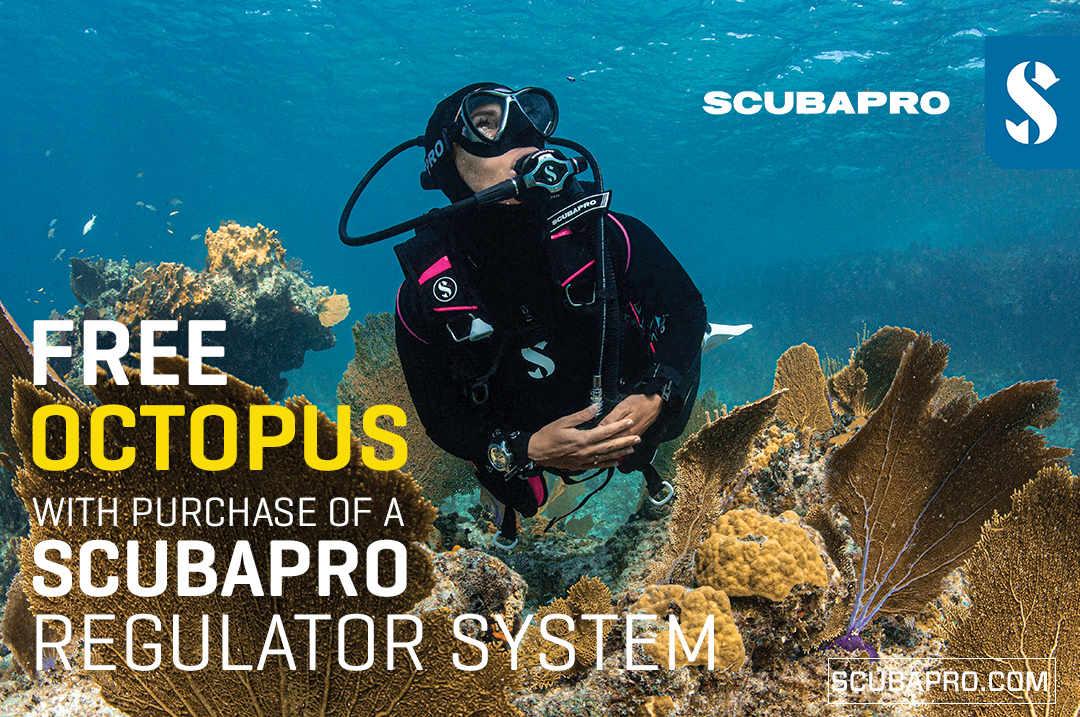
Free Octopus with every purchase of a SCUBAPRO regulator system
Just in time for the spring season, divers can save money with the FREE OCTOPUS SPRING PROMOTION! Until July 31st SCUBAPRO offers an Octopus for free
with every purchase of a regulator system!
Get a free S270 OCTOPUS with purchase of these combinations:
MK25 EVO or MK19 EVO with A700
MK25 EVO or MK19 EVO with S620Ti
MK25 EVO or MK19 EVO with D420
MK25 EVO Din mit S620Ti-X
Get a free R105 OCTOPUS with purchase of the following combinations:
MK25 EVO or MK19 EVO with G260
MK25 EVO or MK17 EVO with S600
SCUBAPRO offers a 30-year first owner warranty on all regulators, with a revision period of two years or 100 dives. All SCUBAPRO regulators are of course certified according to the new European test standard EN250-2014.
Available at participating SCUBAPRO dealers. Promotion may not be available in all regions. Find an authorized SCUBAPRO Dealer at scubapro.com.
More information available on www.scubapro.com.
-
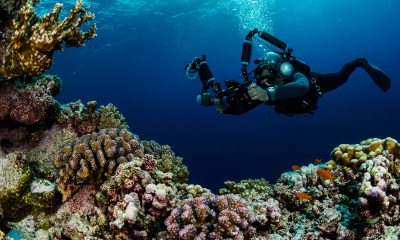
 News3 months ago
News3 months agoHone your underwater photography skills with Alphamarine Photography at Red Sea Diving Safari in March
-
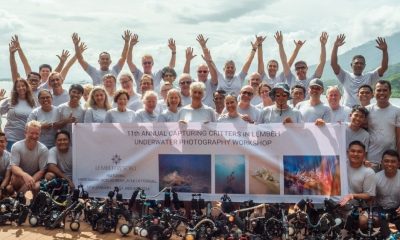
 News3 months ago
News3 months agoCapturing Critters in Lembeh Underwater Photography Workshop 2024: Event Roundup
-
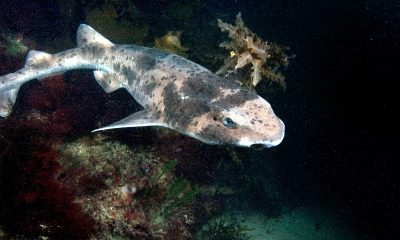
 Marine Life & Conservation Blogs3 months ago
Marine Life & Conservation Blogs3 months agoCreature Feature: Swell Sharks
-
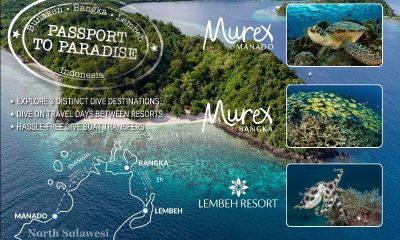
 Blogs2 months ago
Blogs2 months agoMurex Resorts: Passport to Paradise!
-
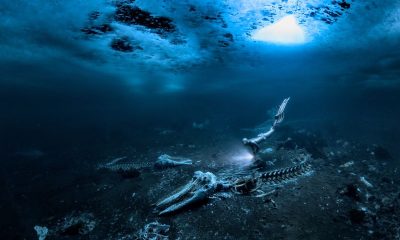
 Blogs2 months ago
Blogs2 months agoDiver Discovering Whale Skeletons Beneath Ice Judged World’s Best Underwater Photograph
-
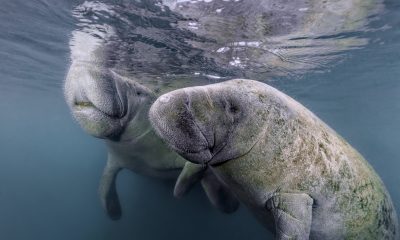
 Marine Life & Conservation2 months ago
Marine Life & Conservation2 months agoSave the Manatee Club launches brand new webcams at Silver Springs State Park, Florida
-
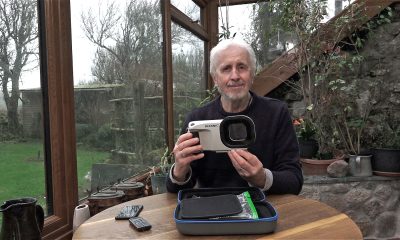
 Gear Reviews3 months ago
Gear Reviews3 months agoGear Review: Oceanic+ Dive Housing for iPhone
-
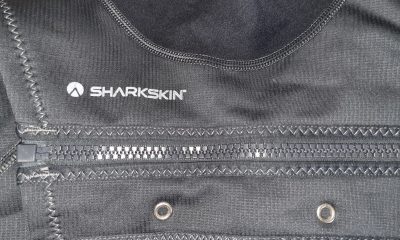
 Gear Reviews2 weeks ago
Gear Reviews2 weeks agoGEAR REVIEW – Revolutionising Diving Comfort: The Sharkskin T2 Chillproof Suit



